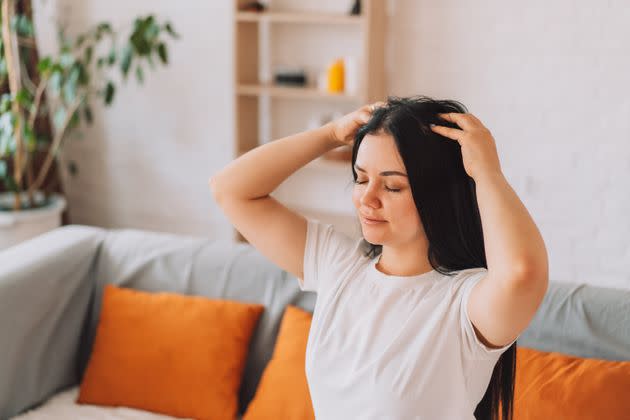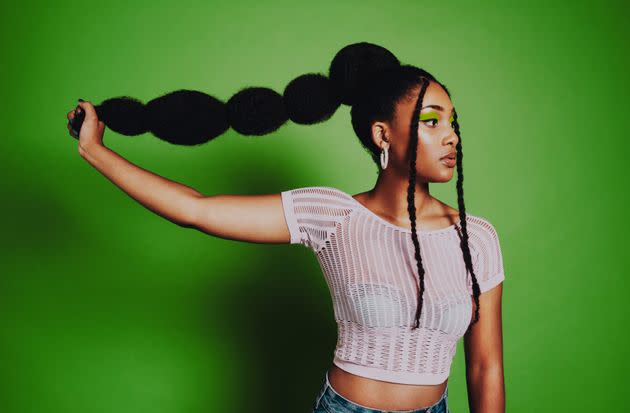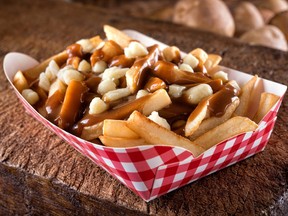[ad_1]

Many of us seem to forget that our scalp is an extension of our skin — until we’re faced with signs of distress in the form of itchiness, flakiness or even worse … hair loss.
“The scalp is the bedrock of your hair follicles and your hair’s support system,” said London-based trichologist Anabel Kingsley. “Poor scalp health, such as flaking and inflammation, can increase hair fall and also weaken hairs as they grow from their follicle.”
Scalp health can impact the overall health and appearance of your hair, and ensuring it’s in prime shape means less chance of hair loss, thinning or unruly scalp conditions.
To learn all about how to properly care for this often underlooked area, we interviewed several trichologists about the habits and behaviors they absolutely avoid.
1. They don’t use hair products without first reading the label.
Like the skin on your face or body, the condition of your scalp should be considered when using any hair care or styling products. “As a trichologist, I would steer clear of using harsh hair products that may exacerbate a scalp condition,” said Anna Astarte, a Los Angeles-based trichologist. Common scalp conditions include dandruff, psoriasis, folliculitis and seborrheic dermatitis.
Astarte recommended avoiding products with sulfates, as they can strip off your scalp’s natural moisture, as well as synthetic fragrances, which can lead to further irritation if you’re already struggling with a scalp condition. Instead, opt for soothing ingredients like aloe vera, anti-inflammatory tea tree oil and chamomile, which can help calm scalp irritation.
2. They don’t underestimate the power of scalp massages.
Scalp massages may be non-existent in your routine, but Astarte said they can work wonders for your scalp’s overall health. “Scalp massages help stimulate blood flow and nourish the hair follicles,” she said.
To perform an at-home scalp massage, use circular motions to massage your scalp for five to 10 minutes, two to three times a week. You can also use a scalp brush with soft, rounded bristles if you don’t want to use your hands.
3. They don’t wear tight hairstyles
“I would never wear tight hairstyles like ponytails, braids or buns more than twice a week,” saidKayla Jones, a Dallas-based certified trichologist. “These hairstyles contribute to hair breakage and traction alopecia along the hairline due to pulling,” she said. They can also create soreness and tenderness on the scalp due to the constant tension.
Limit how often you don this hair style and be mindful of your hair ties; Jones recommends avoiding traditional elastic hair ties and rubber bands and opting for satin scrunchies or “no tension” hair ties instead.


4. They don’t put conditioner on their scalp.
Conditioners are often made with heavy oils, silicones and thickening agents. When applied on your scalp, which already naturally produces oil, the combination can lead to buildup, greasiness, itching and flaking. “Conditioner belongs on the hair strands, as it’s meant for moisturizing,” Jones said ― it doesn’t belong on the scalp.
5. They don’t wait to seek help when it comes to hair thinning.
Notice hair thinning? Set up a time to visit a trichologist. “I’ve had clients who have experienced hair loss for 30 years and we achieved hair growth in four months,” Jones said. “I wouldn’t advise anyone to suffer in silence or suffer longer than they have to.”
Hair thinning can begin as early as 20 years old, with common signs being bald patches, excessive shedding and changes in hair texture and quality. “A trichologist, similar to a dermatologist, can help create a treatment plan consisting of therapies geared toward hair growth,” Jones said.
6. They don’t use products meant for styling on their scalp.
According to Tiffany Young, certified trichologist ofThin Hair Thick, a hair topper brand, hair styling products should be used for just that: hair styling.
“I have seen overzealous and well-meaning people assume that if a product could potentially help their hair, it must also be great for their scalp, and this is simply untrue,” she said. “Hair styling products commonly contain alcohol, which tends to irritate and dry the scalp tissue, as well as silicones, which although may help the hair appear soft and shiny, can act as a moisture barrier on the scalp.”
7. They don’t forget to use sun protection.
If you thought the skin on your face and body were the only areas requiring sun protection, think again. “It is often misunderstood that we can’t get skin cancer on our scalps, but our scalp is made of the same skin as our faces,” said Gretchen Oligee, a Colorado-based trichologist and hair stylist. “I have found on the scalp what turned out to be skin cancer on a number of my clients.” Whether it’s actual sunscreen or a hat, UV protection is important for scalp health.
8. They don’t skip clarifying shampoos.
Especially if you’re one to extend time between washes, a clarifying shampoo can help aid in scalp health. “Clarifying shampoos not only help remove buildup on the hair, but they help remove oils, residual product and debris from the scalp, which can clog hair follicles and possibly lead to hair loss,” said Oligee. “I recommend [double-shampooing] with a clarifier and following up with either a hair mask or a good moisturizing conditioner.”
9. They don’t go longer than three days between hair washes.
Chelcey Salinger, Australian-based trichologist of Australian Trichology Centre, said she’d never go longer than three days between hair washes, as extending the period of time between shampooing increases your risk of dandruff and seborrheic dermatitis. “This is because the particular yeast involved in these conditions is sebum-dependent, and not washing your hair gives a greater opportunity for an overgrowth of this ‘bad’ yeast,” she said.
This is especially true for men, as they’re more prone to oilier scalps and scalp conditions like dandruff, Kingsely said.
10. They don’t skip fiber in their diets.
“Fiber is key to maintaining a healthy gut microbiome, which is directly related to the scalp microbiome,” Salinger said. “When there is dysbiosis and an imbalanced scalp microbiome, that’s when yeast and bacterial infection are most likely to occur in the scalp.”
Ensure your diet is full of fiber-rich fruits and vegetables like pear, apple, blackberry, broccoli, Brussels sprouts and leafy greens.
11. They don’t ignore their scalp’s pH balance.
Potential Hydrogen (pH) plays a crucial role in maintaining scalp health. “When the pH balance is off, meaning surface products are too alkaline or too acidic, we can experience a wide array of scalp issues like irritation, dryness and inflammation,” said Washington-based trichologistJess Poynter. “Knowing and using the products that optimize pH ensures the scalp remains in its highest-functioning state.”
Poynter notes that the optimal pH for hair, skin and nails is between 4.5 and 5.5. Although there’s no way to test the pH of your scalp, pH strips are available over-the-counter and allow you to test your products at home.
12. They don’t over-use dry shampoo.
Dry shampoo can be a savior for extending the days between washes, but overusing it can have detrimental effects on your scalp. “The buildup of dry shampoo residue can clog hair follicles, leading to inflammation, itching and even hair loss over time,” said Poynter, who recommends using dry shampoo no more than three to four days in a row.
To properly use dry shampoo, Poynter says to apply two to three spritzes at the hairline, crown and nape of the neck to address where you’d commonly notice the excess oil. Be sure not to touch your hair with your hands after spraying (to avoid any natural oils on your hands from transferring to your hair) — instead, use a wide tooth comb or a detangling brush to disperse the product.
Related…
Maqvi News #Maqvi #Maqvinews #Maqvi_news #Maqvi#News #info@maqvi.com
[ad_2]
Source link















































